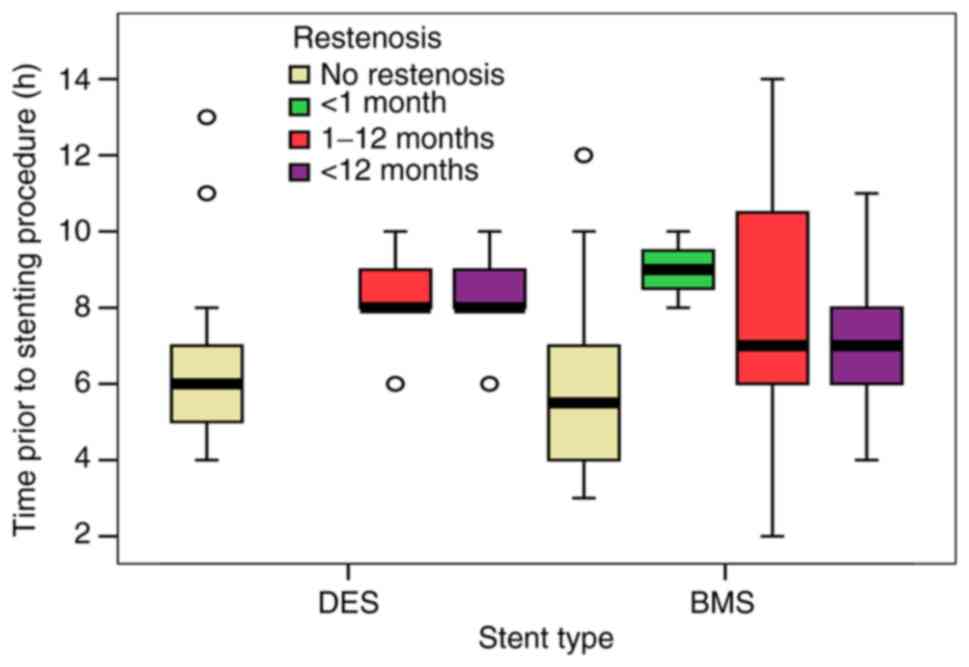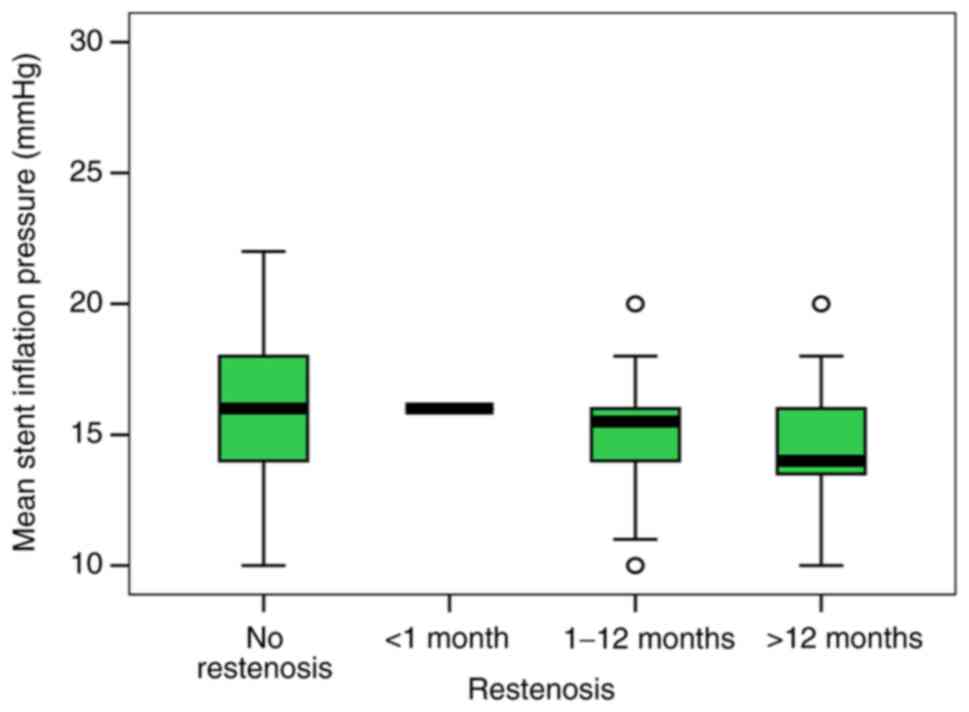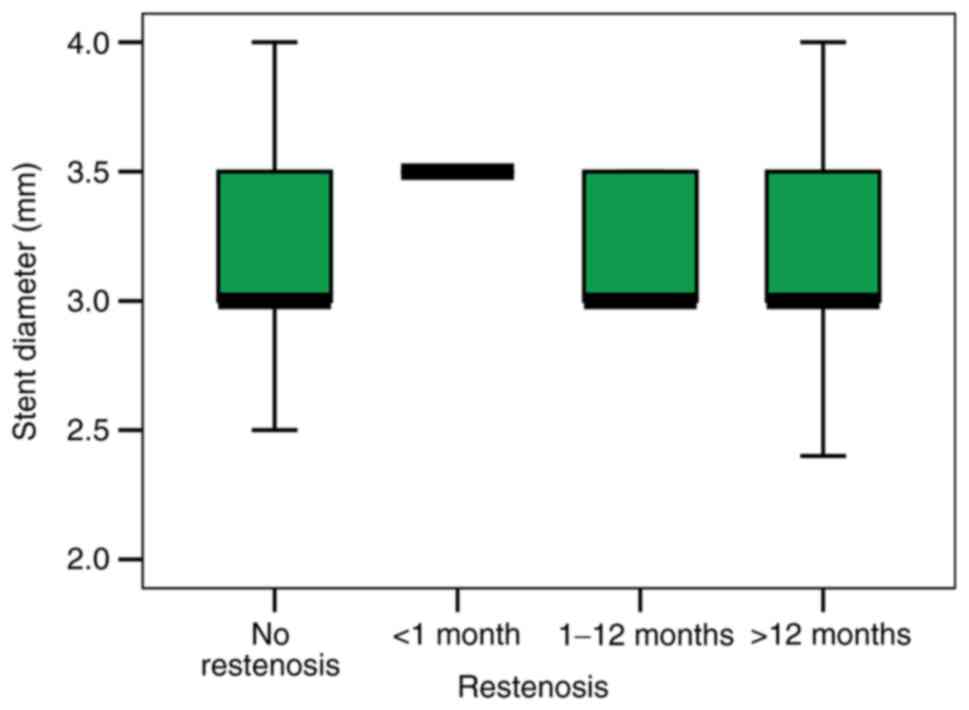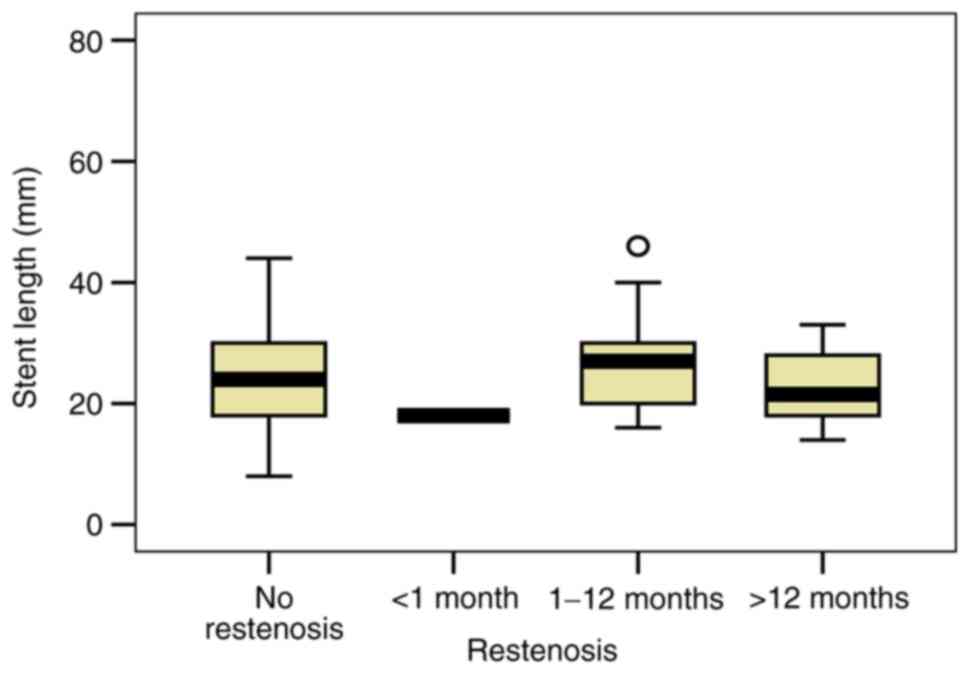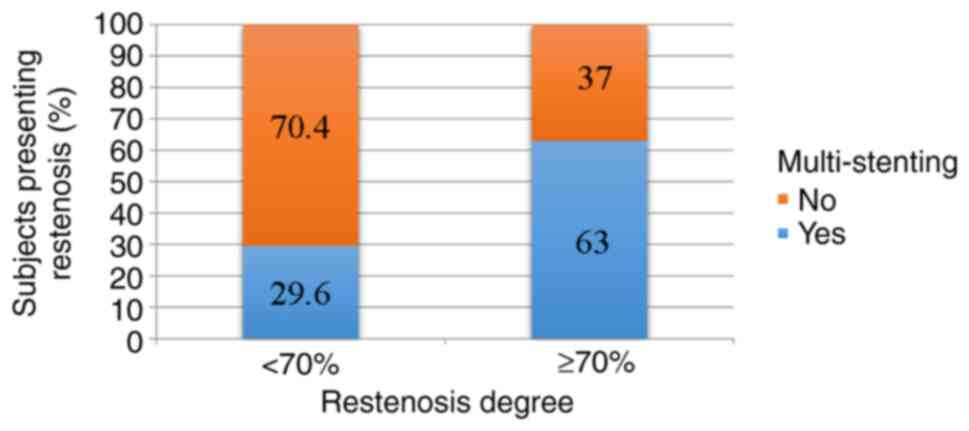|
1
|
Lozano R, Naghavi M, Foreman K, Lim S,
Shibuya K, Aboyans V, Abraham J, Adair T, Aggarwal R, Ahn SY, et
al: Global and regional mortality from 235 causes of death for 20
age groups in 1990 and 2010: A systematic analysis for the global
burden of disease study. Lancet. 380:2095–2128. 2012.PubMed/NCBI View Article : Google Scholar
|
|
2
|
Alfonso F, Byrne RA, Rivero F and Kastrati
A: Current treatment of in-stent restenosis. J Am Coll Cardiol.
63:2659–2673. 2014.PubMed/NCBI View Article : Google Scholar
|
|
3
|
Alfonso F: Treatment of drug-eluting stent
restenosis the new pilgrimage: Quo vadis? J Am Coll Cardiol.
55:2717–2720. 2010.PubMed/NCBI View Article : Google Scholar
|
|
4
|
Rao G, Sheth S and Grines C: Percutaneous
coronary intervention: 2017 in review. J interv Cardiol.
31:117–128. 2018.PubMed/NCBI View Article : Google Scholar
|
|
5
|
Baschet L, Bourguignon S, Marque S,
Durand-Zaleski I, Teiger E, Wilquin F and Levesque K:
Cost-effectiveness of drug-eluting stents versus bare-metal stents
in patients undergoing percutaneous coronary intervention. Open
Heart. 3(e000445)2016.PubMed/NCBI View Article : Google Scholar
|
|
6
|
Neupane S, Khawaja O, Edla S, Singh H,
Othman H, Bossone E, Yamasaki H, Rosman HS, Eggebrecht H and Mehta
RH: Meta-analysis of drug eluting stents compared with bare metal
stents in high bleeding risk patients undergoing percutaneous
coronary interventions. Catheter Cardiovasc Interv. 94:98–104.
2019.PubMed/NCBI View Article : Google Scholar
|
|
7
|
Ochijewicz D, Tomaniak M, Opolski G and
Kochman J: Inflammation as a determinant of healing response after
coronary stent implantation. Int J Cardiovasc Imaging. 37:791–801.
2021.PubMed/NCBI View Article : Google Scholar
|
|
8
|
Stone GW and Kirtane AJ: Bare metal and
drug-eluting coronary stents. In: Topol EJ, Teristein PS (ed)
Textbook of interventional cardiology 6th ed., Philadelphia:
Saunders Elsevier pp171-196, 2012.
|
|
9
|
Her AY and Shin ES: Current management of
in-stent restenosis. Korean Circ J. 48:337–349. 2018.PubMed/NCBI View Article : Google Scholar
|
|
10
|
Hackshaw A, Morris JK, Boniface S, Tang JL
and Milenković D: Low cigarette consumption and risk of coronary
heart disease and stroke: Meta-analysis of 141 cohort studies in 55
study reports. BMJ. 360(j5855)2018.PubMed/NCBI View Article : Google Scholar
|
|
11
|
Wihanda D, Alwi I, Yamin M, Shatri H and
Mudjaddid E: Factors associated with In-stent restenosis in
patients following percutaneous coronary intervention. Acta Med
Indones. 47:209–215. 2015.PubMed/NCBI
|
|
12
|
Mohan S and Dhall A: A comparative study
of restenosis rates in bare metal and drug-eluting stents. Int J
Angiol. 19:e66–e72. 2010.PubMed/NCBI View Article : Google Scholar
|
|
13
|
Li Q, Fu J, Xia Y, Qi W, Ishikado A, Park
K, Yokomizo H, Huang Q, Cai W, Rask-Madsen C, et al: Homozygous
receptors for insulin and not IGF-1 accelerate intimal hyperplasia
in insulin resistance and diabetes. Nat Commun.
10(4427)2019.PubMed/NCBI View Article : Google Scholar
|
|
14
|
Shiba M, Itaya H, Iijima R and Nakamura M:
Influence of late vascular inflammation on long-term outcomes among
patients undergoing implantation of drug eluting stents: Role of
C-Reactive protein. J Am Heart Assoc. 5(e003354)2016.PubMed/NCBI View Article : Google Scholar
|
|
15
|
Kim SY, Guevara JP, Kim KM, Choi HK,
Heitjan DF and Albert DA: Hyperuricemia and coronary heart disease:
A systematic review and meta-analysis. Arthritis Care Res
(Hoboken). 62:170–180. 2010.PubMed/NCBI View Article : Google Scholar
|
|
16
|
Muiesan ML, Salvetti M, Virdis A, Masi S,
Casiglia E, Tikhonoff V, Barbagallo CM, Bombelli M, Cicero AFG,
Cirillo M, et al: Serum uric acid, predicts heart failure in a
large Italian cohort: Search for a cut-off value the uric acid
right for heart health study. J Hypertens. 39:62–69.
2021.PubMed/NCBI View Article : Google Scholar
|
|
17
|
Wu Y and Fu X: Comprehensive analysis of
predictive factors for rapid angiographic stenotic progression and
restenosis risk in coronary artery disease patients underwent
percutaneous coronary intervention with drug-eluting stents
implantation. J Clin Lab Anal. 33(e22666)2019.PubMed/NCBI View Article : Google Scholar
|
|
18
|
Joo HJ, Jeong HS, Kook H, Lee SH, Park JH,
Hong SJ, Yu CW and Lim DS: Impact of hyperuricemia on clinical
outcomes after percutaneous coronary intervention for in-stent
restenosis. BMC Cardiovasc Disord. 18(114)2018.PubMed/NCBI View Article : Google Scholar
|
|
19
|
Lambert ND, Sacrinty MT, Ketch TR, Turner
SJ, Santos RM, Daniel KR, Applegate RJ, Kutcher MA and Sane DC:
Chronic kidney disease and dipstick proteinuria are risk factors
for stent thrombosis in patients with myocardial infarction. Am
Heart J. 157:688–694. 2009.PubMed/NCBI View Article : Google Scholar
|
|
20
|
Gao WD, Ma M, Zhang GX, Zhang XF and Sun
G: First-generation versus second-generation drug-eluting stents in
patients with chronic kidney disease: A systematic review and
meta-analysis. Postgrad Med. 131:43–51. 2019.PubMed/NCBI View Article : Google Scholar
|
|
21
|
Zbinden R, von Felten S, Wein B, Tueller
D, Kurz DJ, Reho I, Galatius S, Alber H, Conen D, Pfisterer M, et
al: Impact of stent diameter and length on in-stent restenosis
after DES vs BMS implantation in patients needing large coronary
stents-A clinical and health-economic evaluation. Cardiovasc Ther.
35:19–25. 2017.PubMed/NCBI View Article : Google Scholar
|
|
22
|
Pleva L, Kukla P and Hlinomaz O: Treatment
of coronary in-stent restenosis: A systematic review. J Geriatr
Cardiol. 15:173–184. 2018.PubMed/NCBI View Article : Google Scholar
|
|
23
|
Uretsky BF, Rosanio S, Lerakis S, Wang FW,
Smiley M, Stouffer GA, Tocchi M and Estella P: A prospective
evaluation of angiography-guided coronary stent implantation with
high versus very high balloon inflation pressure. Am Heart J.
140:804–812. 2000.PubMed/NCBI View Article : Google Scholar
|
|
24
|
Dirschinger J, Kastrati A, Neumann FJ,
Boekstegers P, Elezi S, Mehilli J, Schühlen H, Pache J, Alt E,
Blasini R, et al: Influence of balloon pressure during stent
placement in native coronary arteries on early and late
angiographic and clinical outcome: A randomized evaluation of
high-pressure inflation. Circulation. 100:918–923. 1999.PubMed/NCBI View Article : Google Scholar
|
|
25
|
Mattos LA, Sousa AG, Chaves A, Feres F,
Pinto I, Tanajura L, Centemero M, Abizaid A, Seixas AC, Abizaid A,
et al: Influence of balloon pressure inflation in patients
undergoing primary coronary stent implantation during acute
myocardial infarction: A quantitative coronary angiography
analysis. Arq Bras Cardiol. 80:250–268. 2003.PubMed/NCBI View Article : Google Scholar
|
|
26
|
Fröbert O, Sarno G, James SK, Saleh N and
Lagerqvist B: Effect of stent inflation pressure and
Post-Dilatation on the outcome of coronary artery intervention. A
report of more than 90,000 stent implantations. PLoS One.
8(e56348)2013.PubMed/NCBI View Article : Google Scholar
|















